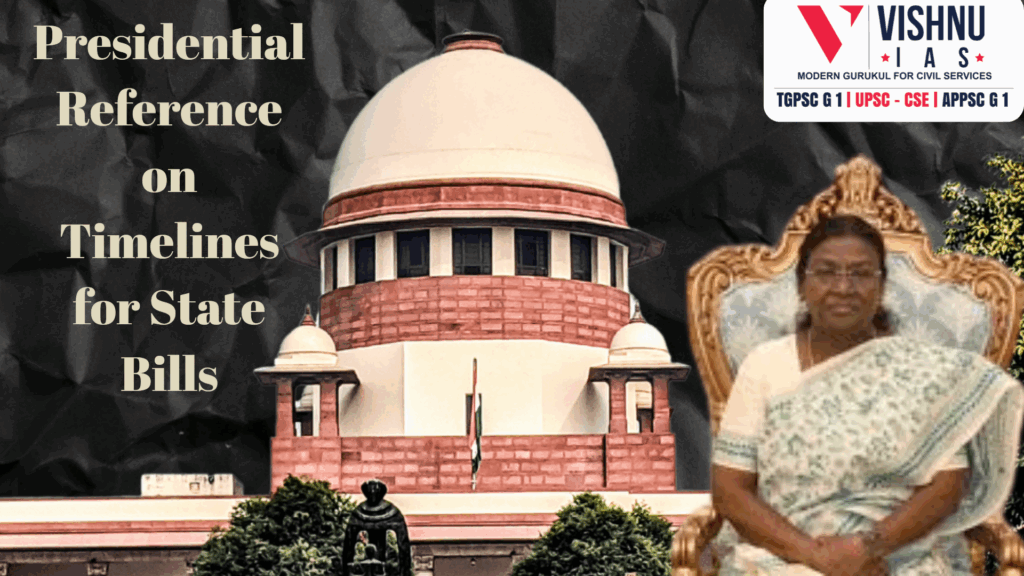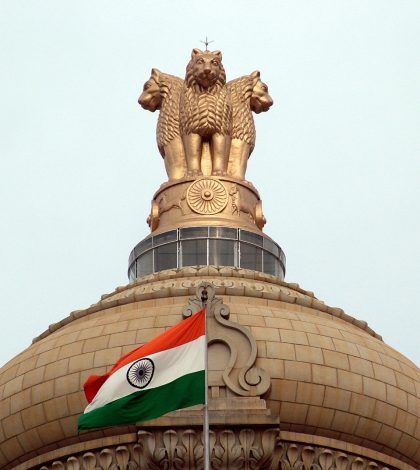Presidential Reference on Timelines for State Bills
Introduction
The recent Presidential Reference under Article 143 of the Indian Constitution has brought into focus a critical issue in constitutional law—the timelines for Governors and the President to assent to state legislature Bills. This follows the Supreme Court’s April 8, 2025, judgment, which mandated a three-month deadline for Governors and the President to act on state Bills.
Constitutional Provisions
- Article 143:Empowers the President to seek the Supreme Court’s advisory opinion on questions of public importance. However, such opinions are not binding.
- Articles 200 & 201:Specify the procedures for Governors and the President to assent, withhold assent, or return state legislature Bills. Notably, these articles do not prescribe any timelines for such actions.
- Article 142:Enables the Supreme Court to issue decrees to ensure “complete justice,” which was invoked in the April judgment to impose timelines.
- Article 361:Grants immunity to the President and Governors for official actions, though judicial review is permissible in cases of bad faith.
Issues Raised
- Timelines for Assent:The core question is whether the judiciary can prescribe timelines in the absence of explicit constitutional provisions. The April judgment mandated a three-month deadline, a move contested in the Presidential Reference.
- Deemed Assent Doctrine:The Supreme Court’s decision to “deem” certain Bills as having been assented to after the deadline is a significant point of contention.
- Judicial Overreach vs Separation of Powers:Critics argue that the Court’s directives encroach on executive powers, raising questions about the balance between judiciary and legislature.
- Federal Implications:Imposing timelines could centralize power by increasing the role of Governors, who are appointed by the Centre, potentially undermining state autonomy.
Political and Judicial Reactions
- Tamil Nadu’s Opposition:CM M.K. Stalin has criticized the reference as an attempt to weaken state governments and democratic mandates.
- Judicial Background:The April 8 judgment arose from Tamil Nadu’s petition against the Governor’s inaction on ten Bills. The Supreme Court’s intervention was seen as a corrective measure against indefinite delays.
- Procedural Concerns:The Presidential Reference also questions whether such significant issues should be decided by a larger bench, given their constitutional importance.
Implications for Governance
- Centre-State Relations:The controversy underscores the tension between state autonomy and central oversight. The outcome will shape the balance of power in federal governance.
- Judicial Precedents:The case will test the scope of judicial review and the limits of Article 142 in addressing constitutional gaps.
- Legislative Reforms:The ambiguity in Articles 200 and 201 highlights the need for clear legislative or constitutional amendments to prevent future disputes.
Way Forward
- Judicial Clarification: The Supreme Court’s advisory opinion, expected from a Constitution Bench, will be crucial in settling these issues.
- Legislative Action:Parliament could consider codifying timelines for assent to Bills, aligning with recommendations from previous commissions.
- Strengthening Federalism:Ensuring Governors act on the advice of state governments while respecting constitutional checks is essential for preserving democratic mandates.
Conclusion
The Presidential Reference on timelines for state Bills has sparked a crucial debate on federalism, governance, and the judiciary’s role. Resolving this issue requires a balance between respecting state autonomy and ensuring efficient legislative processes. As India navigates these constitutional challenges, the need for clarity and consensus becomes imperative to uphold the principles of democracy and federalism.


